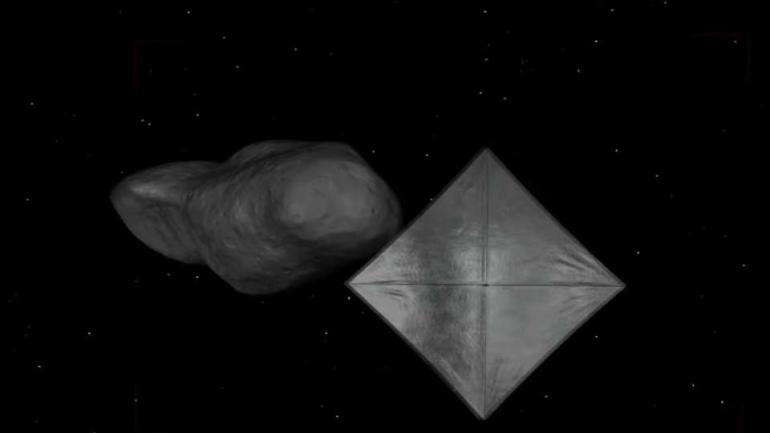SpaceX’s Falcon Heavy rocket has notched its third successful launch. The U.S. space company says the night lift-off was the most difficult one attempted yet, and some of the cargo it’s carrying could be revolutionary. John Zarella has details.
This was the third flight and the first night launch of the SpaceX Falcon Heavy rocket. Tucked inside, a virtual warehouse full of satellites, 24 in all for the U.S. military, the U.S. space agency NASA, and private institutions. One of the tiniest hitching a ride to orbit is called a CubeSat. It’s no bigger than a loaf of bread, but it could revolutionize space travel.
During testing in California, the itsy, bitsy satellite unfurled a 32-square meter solar sail made from reflective Mylar. The brainchild of the nonprofit Planetary Society that promotes space exploration, the satellite, funded by donations, is called LightSail 2. It is called LightSail because that’s exactly what it does — it sails on sunlight.
About two weeks from now, in a 720-kilometer high orbit, the spacecraft will deploy its solar sail. Particles from the sun called photons will push on the sail, giving it momentum. Bill Nye,”The Science Guy,” is head of the Planetary Society.
“If we have a spacecraft that’s low enough in mass and big and reflective enough then photons can give it a little push,” he explained. “Each photon imparts just a tiny bit of momentum, but the sun pumps out billions and billions of them every second.”
If it works, the solar photons will exert enough pressure on the sail to raise the spacecraft’s orbit, making it the first to ever change orbit using only sunlight for propulsion.
Scientists and engineers believe sailing on sunlight could one day eliminate the need for expensive and dangerous chemical rockets that eventually run out of fuel.
Also, with the sun constantly providing momentum, a solar sail spacecraft could fly at a speed of up to 240-thousand kilometers per hour. It could fly around the solar system really fast and never run out of gas.
As the name implies, there was a LightSail 1. It flew four years ago in a demonstration of the technology. Grainy video shows it streaking across the sky.
Nearly a decade ago, the Japanese space agency successfully tested a solar sail in deep space. In a few years, NASA is planning to use a solar sail to explore a near-earth asteroid. If all goes well, spacecraft of the future may well be sailing on sunbeams.
 CGTN America
CGTN America
